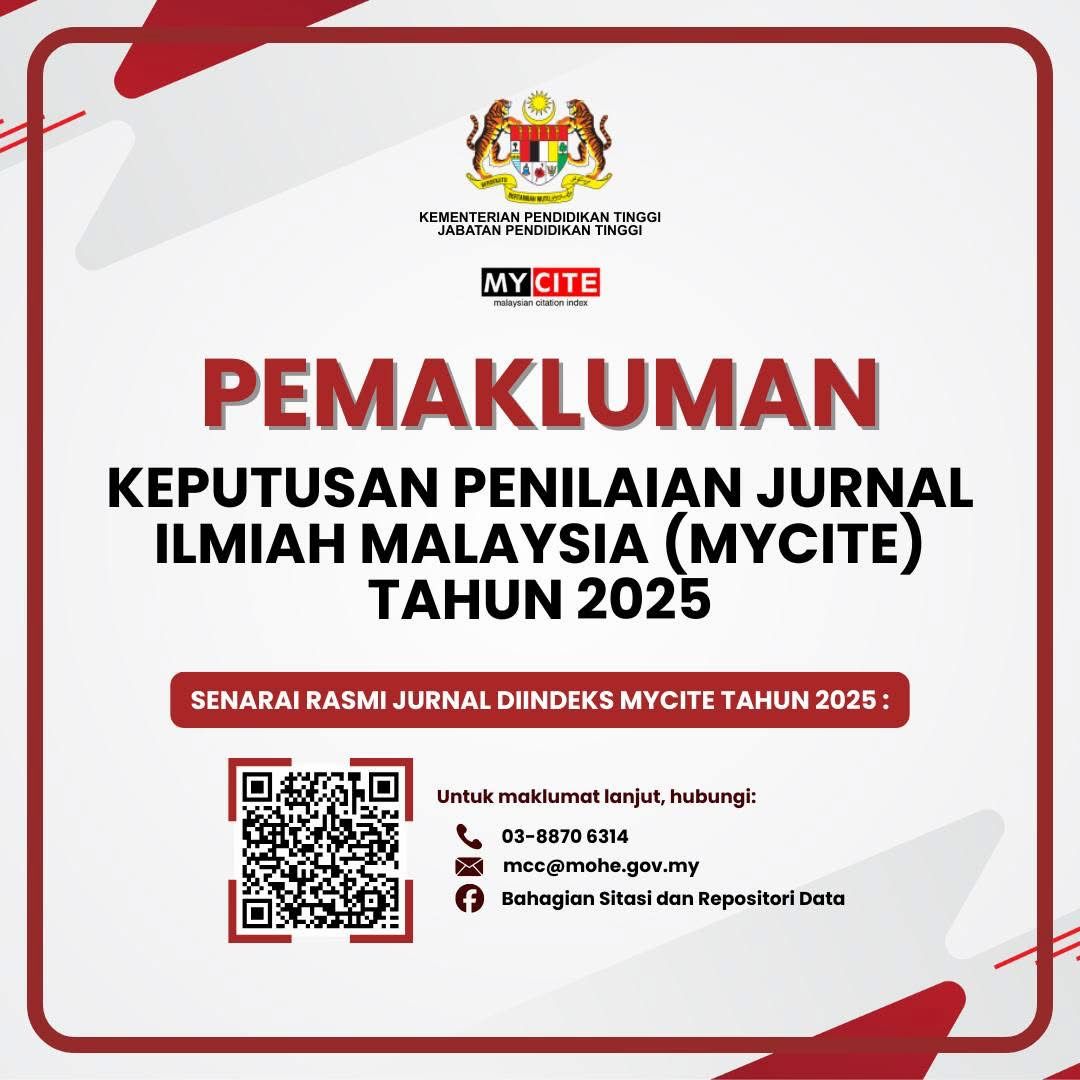Analysing the Multi-sensory Elements of Immersive Experience for Art Exhibitions in Southeast Asia
DOI:
https://doi.org/10.24191/idealogy.v10i2.758Abstract
This study explores how multi-sensory elements—sight, sound, touch, taste, and smell—enhance visitor engagement and interactivity in immersive art exhibitions across Southeast Asia. As immersive technologies like Virtual Reality (VR), Mixed Reality (MR), and Augmented Reality (AR) become more common in artistic spaces, understanding the role of the senses in shaping user experience is increasingly important. Through a content analysis, this research analyses selected exhibitions to evaluate the extent and effectiveness of sensory integration. The findings reveal that VR and MR offer the highest levels of immersion, allowing participants to engage deeply with digital and hybrid environments. Extended Reality (XR) also creates strong interactive experiences, while AR is often more limited in its immersive impact due to its focus on visual overlays. Among the sensory elements, sight, sound, and touch are the most employed, contributing significantly to users’ sense of presence and engagement. In contrast, taste and smell remain underutilized due to technological and logistical challenges, despite their potential to enhance emotional and memory-based connections with the artwork. The insights from this research offer valuable guidance for future developments in immersive art, suggesting that the thoughtful integration of all five senses can deepen audience engagement and create more memorable, meaningful experiences.
Keywords: Multi-sensory Elements, Immersive Experience, Art Exhibitions, Southeast Asia
References
Aristotle on demarcating the five senses on JSTOR. (n.d.). www.jstor.org. https://www.jstor.org/stable/2184311
Beck, M. (2023). A lived experience—Immersive multi-sensorial art exhibitions as a new kindyes of (Not That) ‘Cheap Images.’ Arts, 12(1), 16. https://www.mdpi.com/2076-0752/12/1/16
Brandt, T., Dieterich, M., & Huppert, D. (2024). Human senses and sensors from Aristotle to the present. Frontiers in Neurology, 15, 1–15. https://doi.org/10.3389/fneur.2024.1404720
Carulli, M., & Bordegoni, M. (2020). Multi-sensory augmented reality experiences for cultural heritage exhibitions. https://link.springer.com/chapter/10.1007/978-3-030-31154-4_13
De Jesus, B. J., Junior, Perreault, L., Lopes, M. K. S., Roberge, M., Oliveira, A. A., & Falk, T. H. (2023). Using multi-sensory virtual reality nature immersion as a therapeutic modality for improving HRV and cognitive functions in post-traumatic stress disorder: a pilot study. Frontiers in Virtual Reality, 4. https://doi.org/10.3389/frvir.2023.1261093
Dogan, E., & Kan, M. H. (2020). Bringing heritage sites to life for visitors: Towards a conceptual framework for an immersive experience. Advances in Hospitality and Tourism Research (AHTR), 8(1), 76–99. https://doi.org/10.30519/ahtr.630783
Doucé, L., Luo, D., & Nys, K. (2024). Multi-sensory museum experience: An integrative view and future research directions. Museum Management and Curatorship, 39(1), 45–67. https://www.tandfonline.com/doi/full/10.1080/09647775.2024.2357071
Doukianou, Stella & Daylamani-Zad, Damon & Paraskevopoulos, I. (2020). Beyond Virtual Museums: Adopting Serious Games and Extended Reality (XR) for User- Centred Cultural Experiences. 10.1007/978-3-030-37191-3_15.
Dzyuba, A. (2023, January 2). Council post: Immersive experience: The definition, the technology and the future. Forbes. https://www.forbes.com/councils/forbestechcouncil/2023/01/02/immersiveexperience-the-definition- the-technology-and-the-future/
Hashim Amir, N., Mazlan, H., & Omar, A. (2022). Virtual Art Gallery Tour: Understanding the Curatorial Approach.Idealogy Journal, 7(2), 25-34. doi:10.24191/idealogy.v7i2.349
Mäkelä, A. (2020). Multi-sensory Experience Design in Museums. Laurea University of Applied Sciences. https://www.theseus.fi/bitstream/handle/10024/342158/Multisensory%20Experience%20Design%20in%20Museums.pdf
Mohd Yunus, M., Che Din, S., & Mohamed Ghazali, N. (2024). A Content Analysis of Graphic Elements in 2D and 3D Animated Explainer Videos for 3D Laser Scanning in Construction. Idealogy Journal, 9(2). doi:10.24191/idealogy.v9i2.561
Pursey, T., & Lomas, D. (2018). Tate Sensorium: An experiment in multi-sensory immersive design. The Senses and Society, 13(3), 297–310. https://doi.org/10.1080/17458927.2018.1516026
Shi, Y., Abdul Ghafar, M., & Faiz Yahaya, M. (2024). Augmented Reality for interactive experiences in museums: A review. Idealogy Journal, 9(2). doi:10.24191/idealogy.v9i2.551
Świdrak, J., Georgiou, O., Banakou, D., Matamala-Gomez, M., Pochwatko, G., & Seinfeld, S. (2024). Beyond audiovisual: Novel multi-sensory stimulation techniques and their applications. Frontiers in Virtual Reality, 5 .https://doi.org/10.3389/frvir.2024.1491854
Syed Rizakri, S., Mohamed Ghazali, N., Mohd Lazim, N., & Che Din, S. (2024). An Inspiration Analysis of Digital Illustration Used in Augmented Reality. Idealogy Journal, 9(1).
Vi, C. T., Ablart, D., Gatti, E., Velasco, C., & Obrist, M. (2017). Not just seeing but feeling art: Mid-air haptic experiences are integrated in a multi-sensory art exhibition. International Journal of HumanComputer Studies, 107, 4-16. https://www.sciencedirect.com/science/article/pii/S1071581917300988.
Downloads
Published
Issue
Section
License
Copyright (c) 2025 UiTM Press

This work is licensed under a Creative Commons Attribution-NonCommercial-NoDerivatives 4.0 International License.
UiTM Press (the Publisher) has agreed to publish the undersigned author’s paper in Idealogy Journal. The agreement is contingent upon the fulfilment of a number of requirements listed below.
1. The undersigned author warrants that the paper entitled below is original, that it is not in any way libellous or unlawful in Malaysia, that it does not infringe any copyright or other proprietary right. The undersigned hereby represents and warrants that he/she is the author of the paper, except for material that is clearly identified as to its original source, with permission notices from the copyright owners where required. The undersigned represents that he/she has the power and authority to sign and execute this agreement.
2. The undersigned author warrants that the paper entitled below has not been published elsewhere, and also it will not be submitted anywhere else for publication prior to acceptance/rejection by this Journal.
3. By submitting the paper entitled below, the undersigned author agrees to transfer the rights to publish and distribute the paper in an international e-journal (entitled above) to Publisher.
4. The undersigned author agrees to make a reasonable effort to conform to Publisher's submission guidelines and to liaise with the editor to ensure that the requirements of these guidelines are met to a reasonable degree.
5. The corresponding author signs for and accepts responsibility for releasing this material on behalf of any and all coauthors. This agreement is to be signed by at least one of the authors who has obtained the assent of the co-author(s) where applicable. After submission of this agreement signed by the corresponding author, changes of authorship or in the order of the authors listed will not be accepted.



